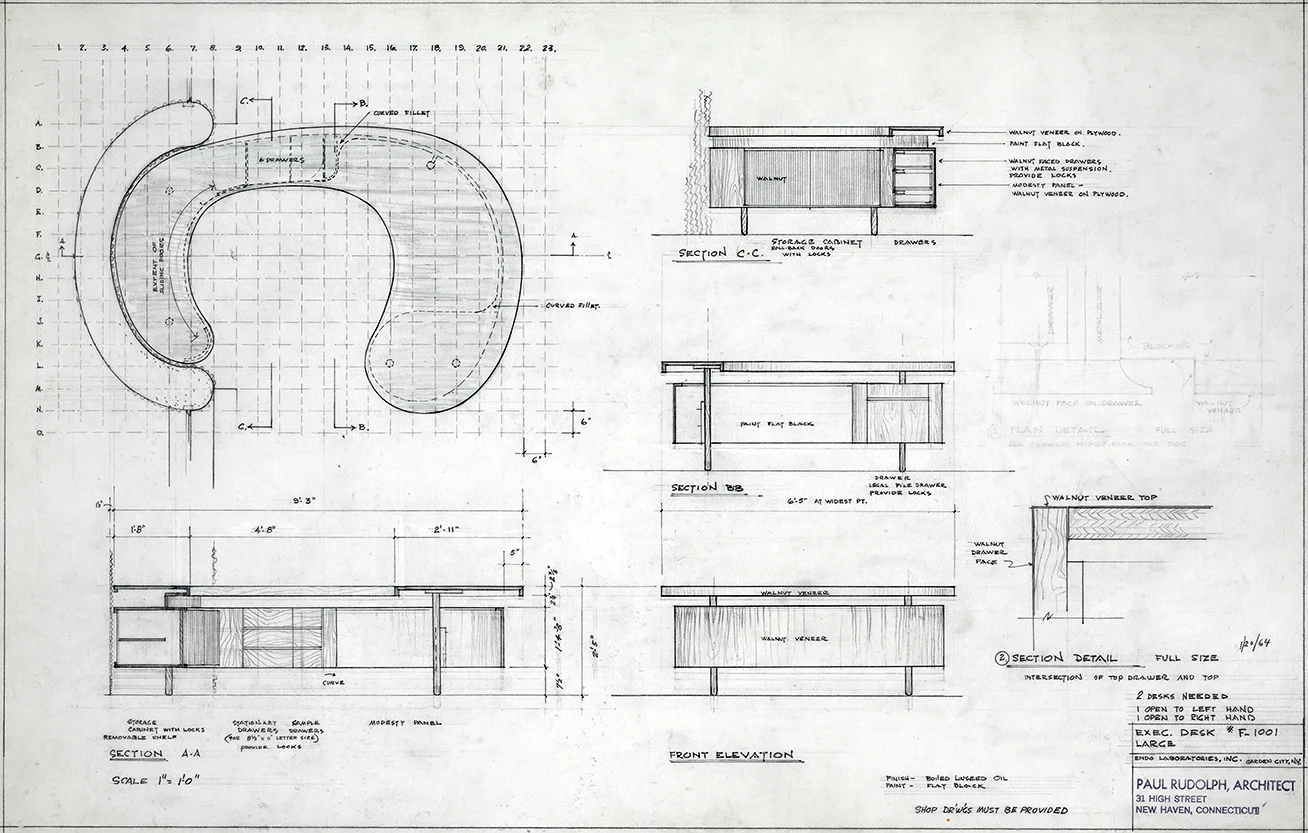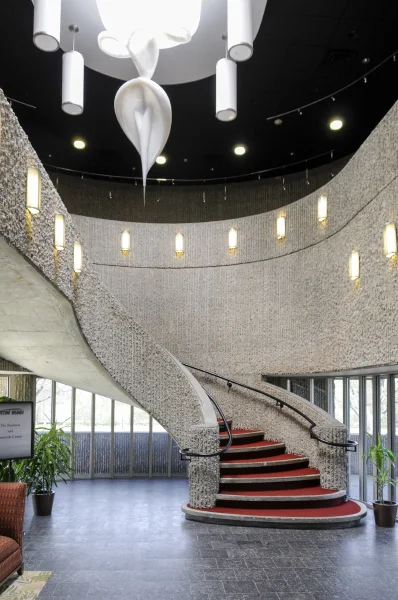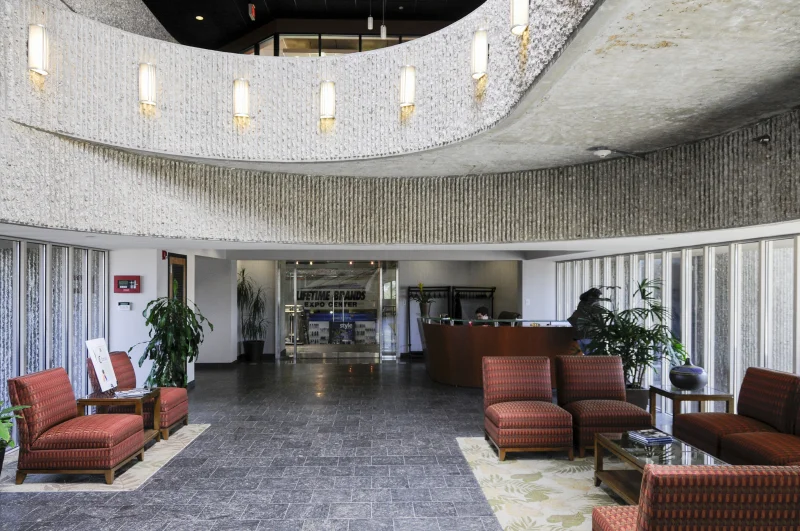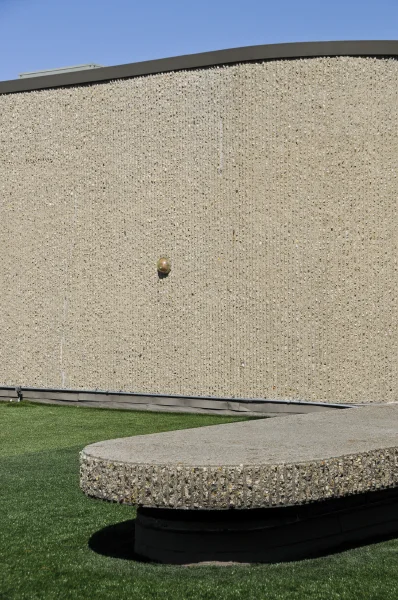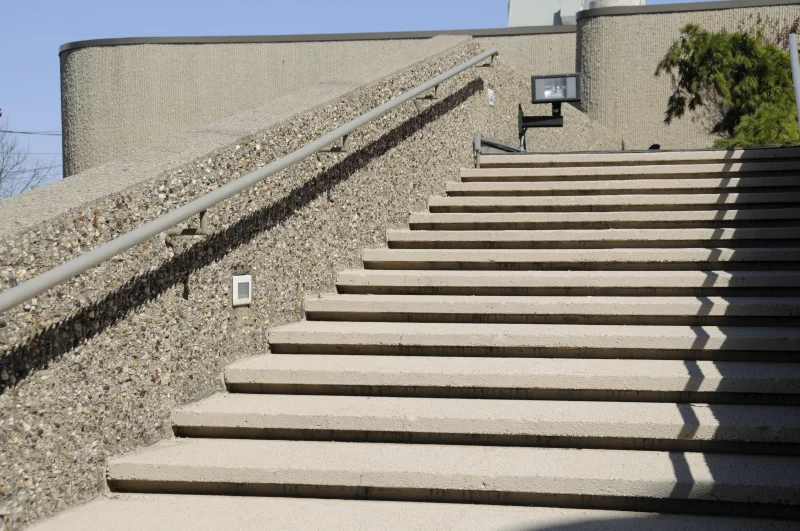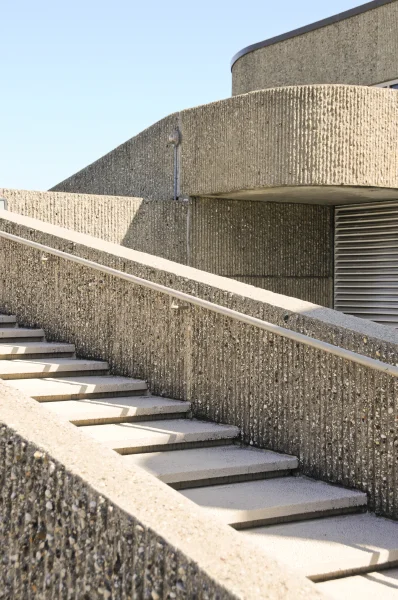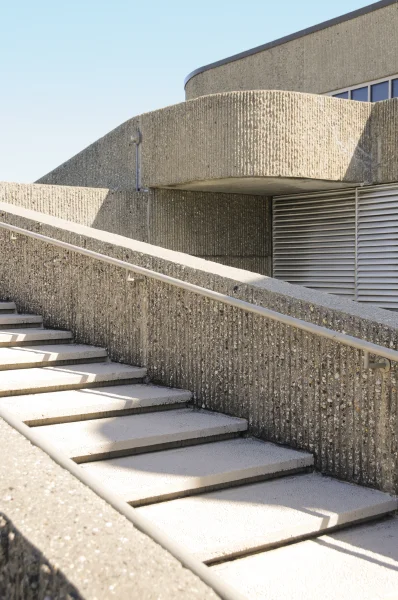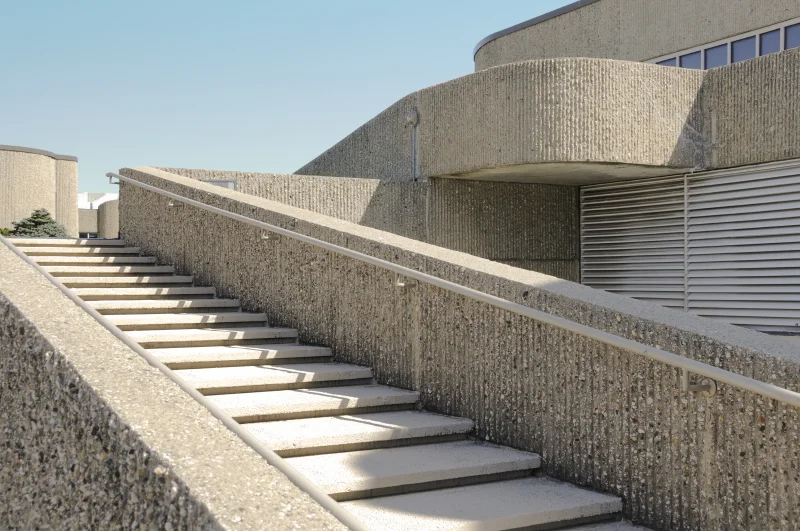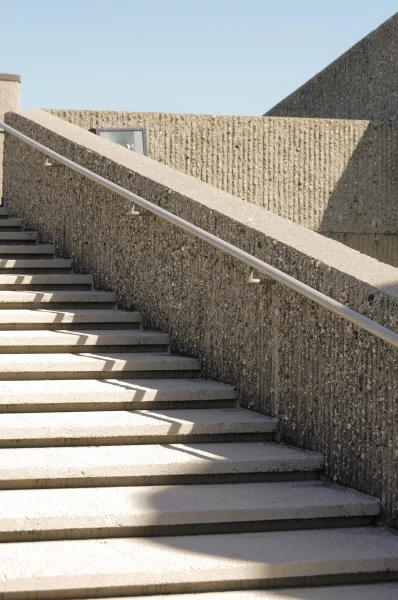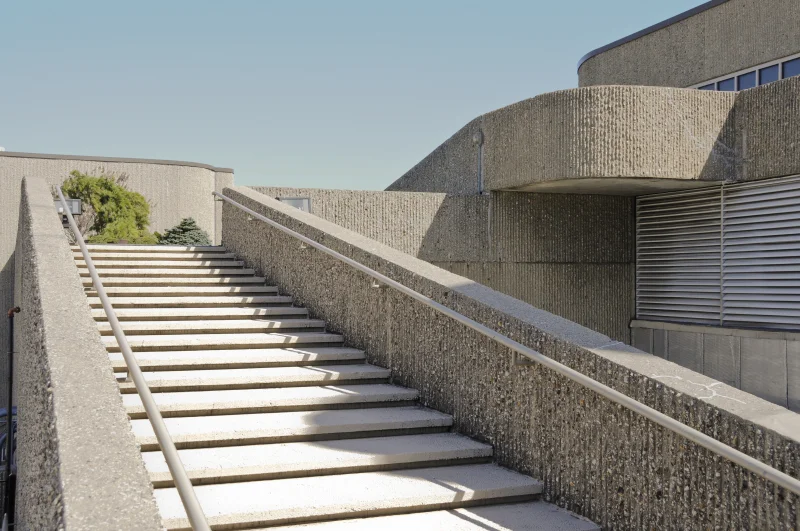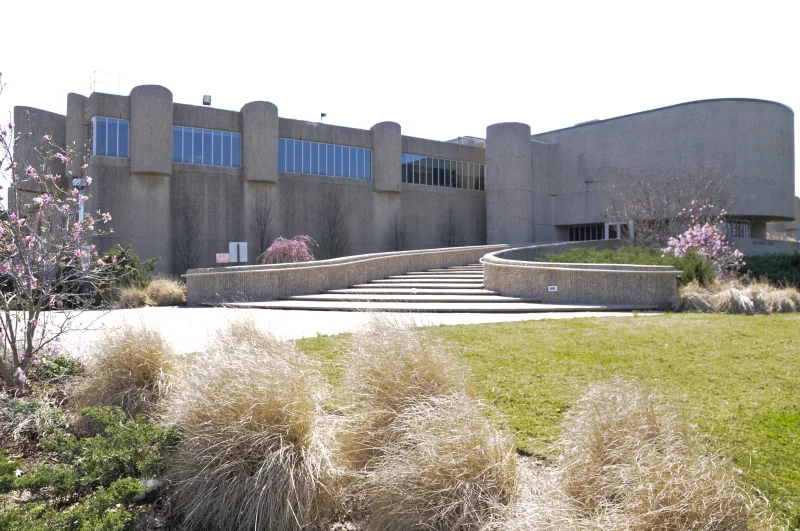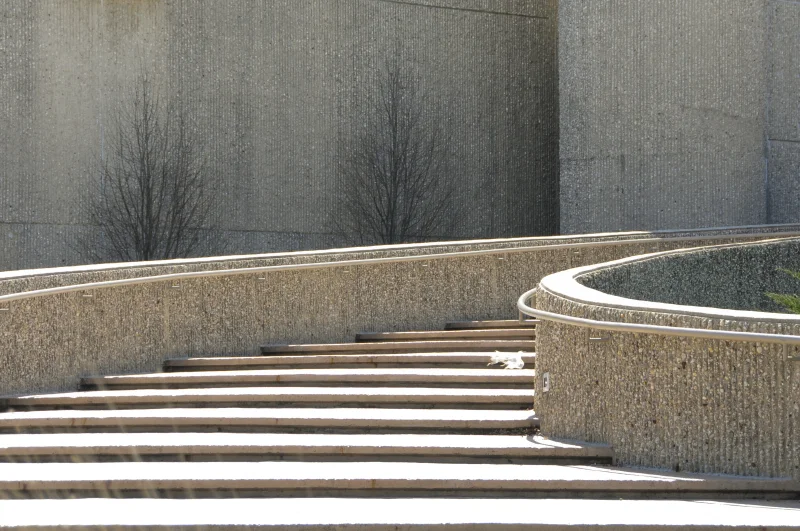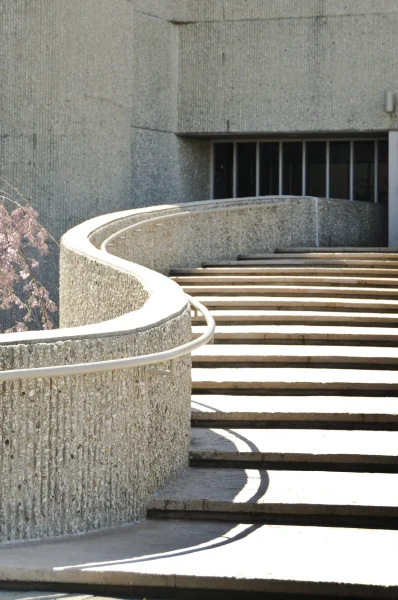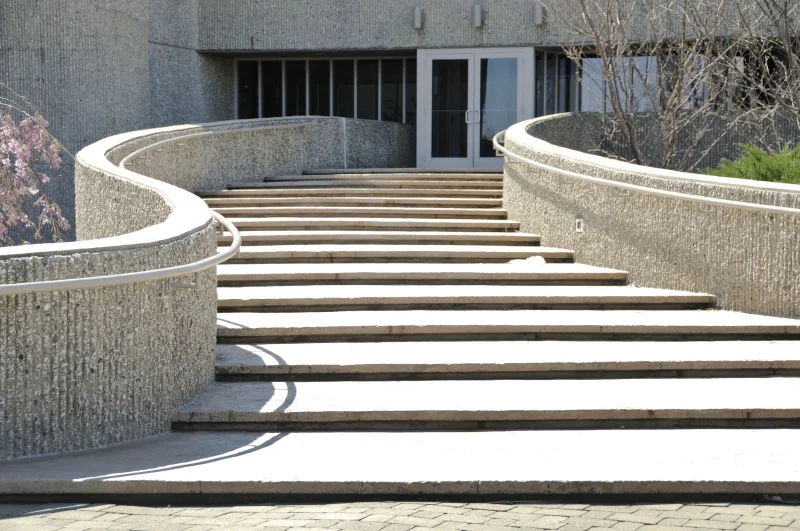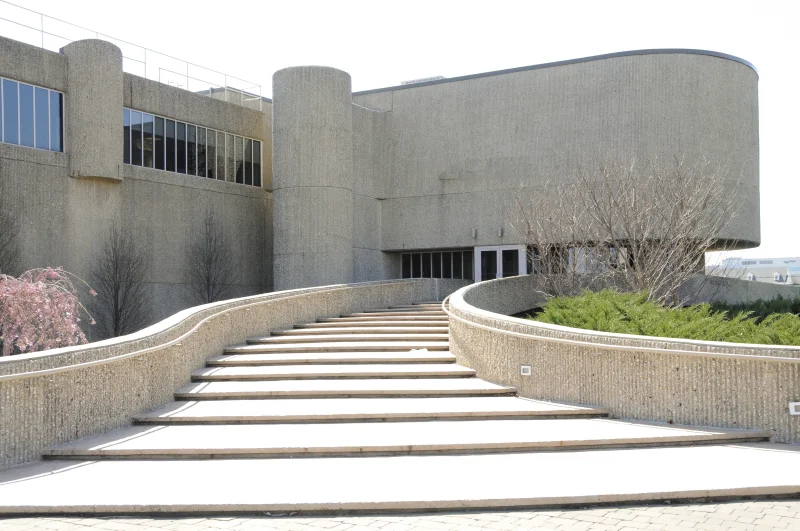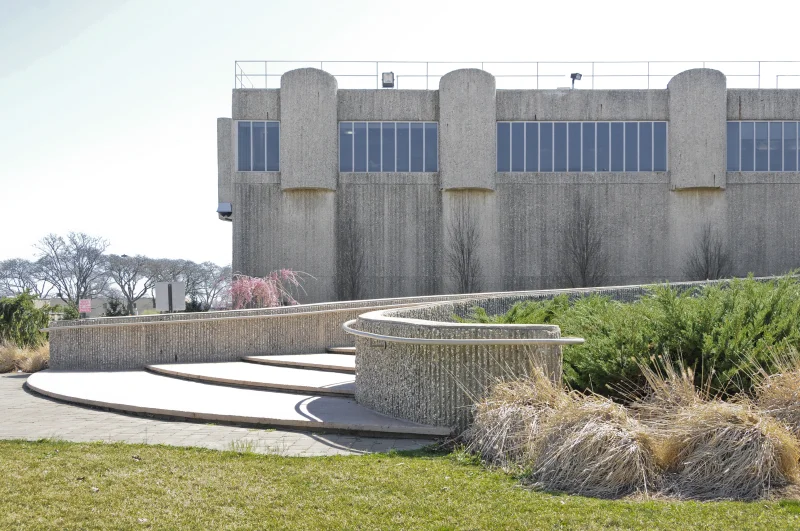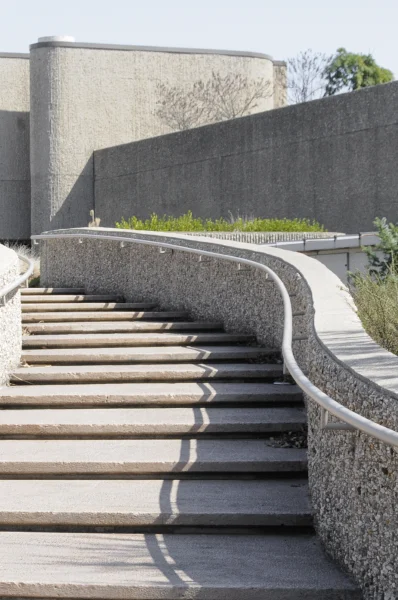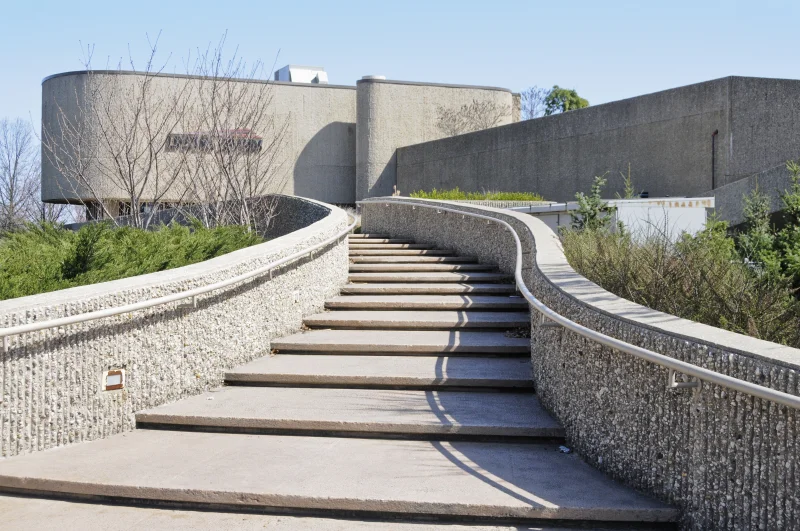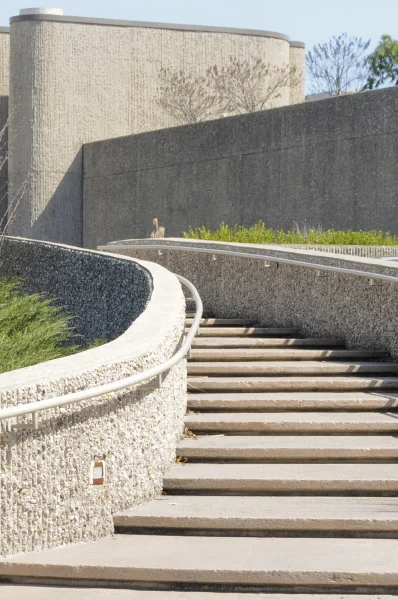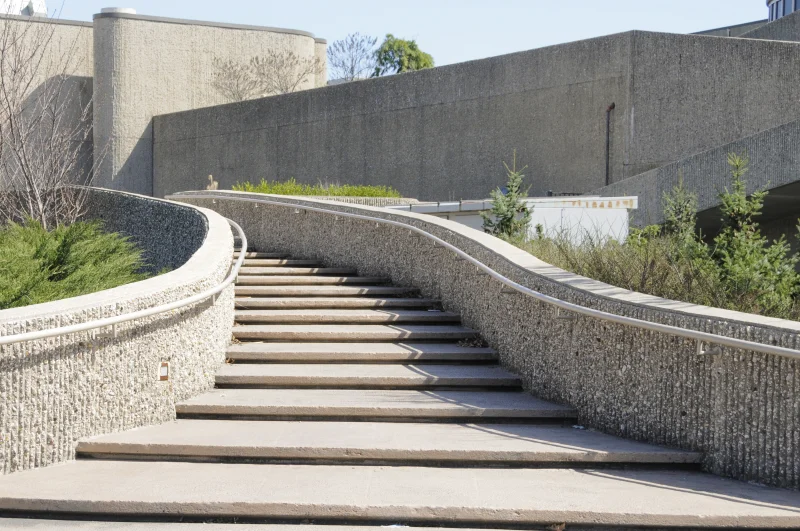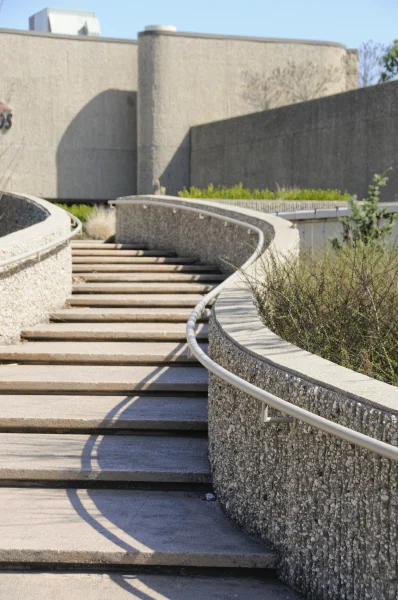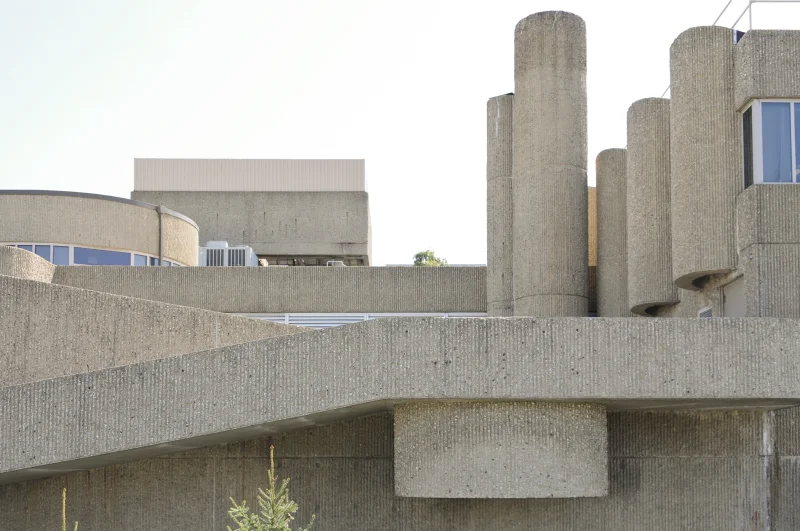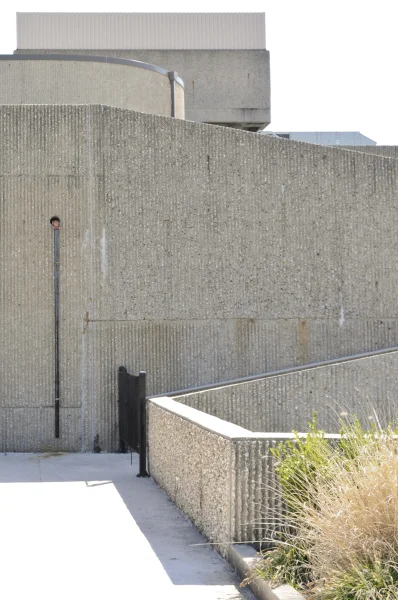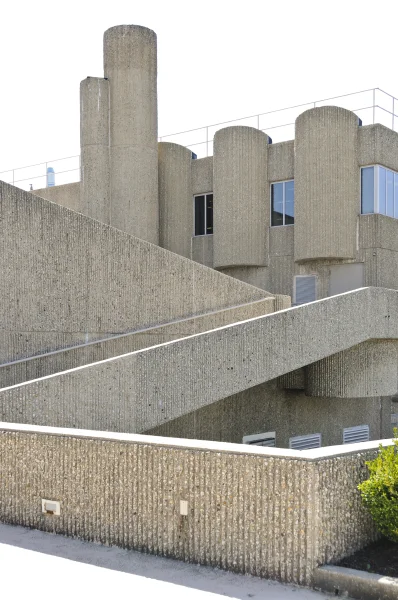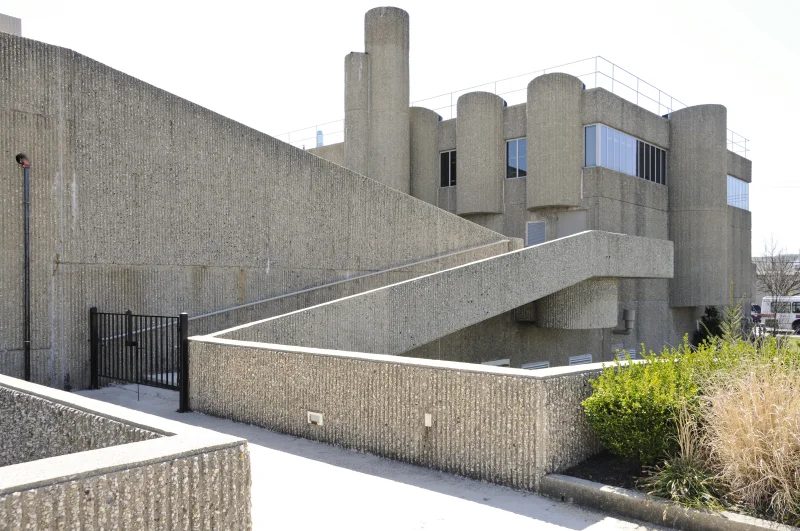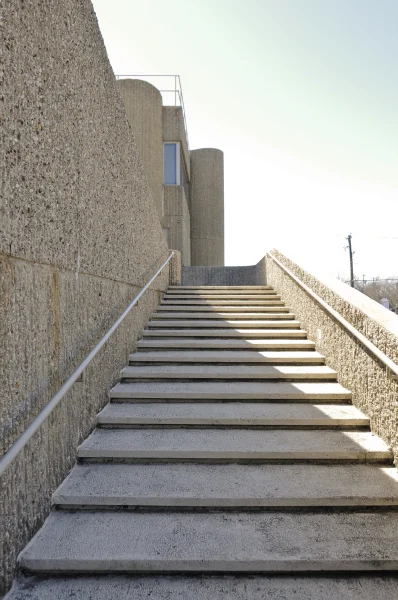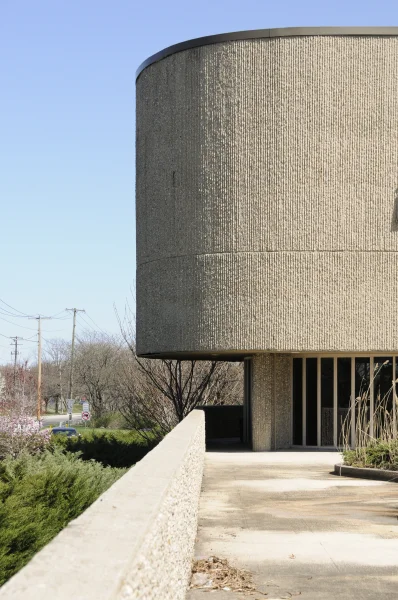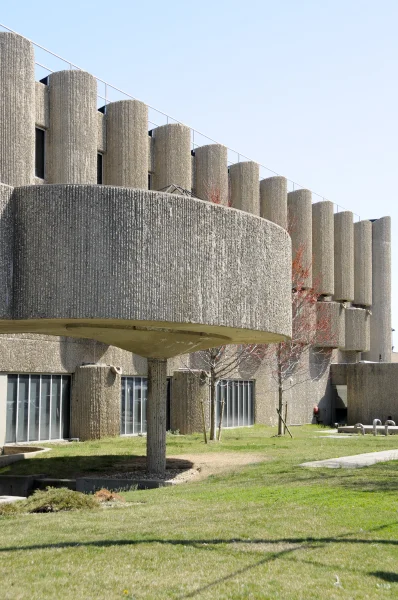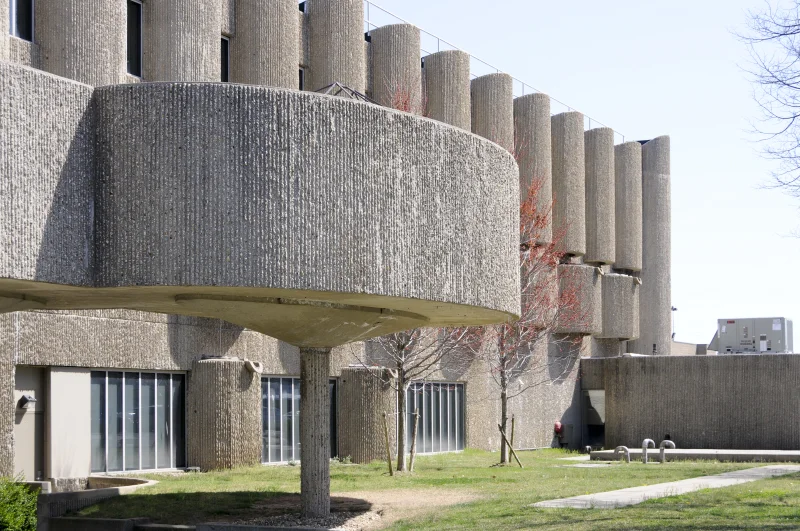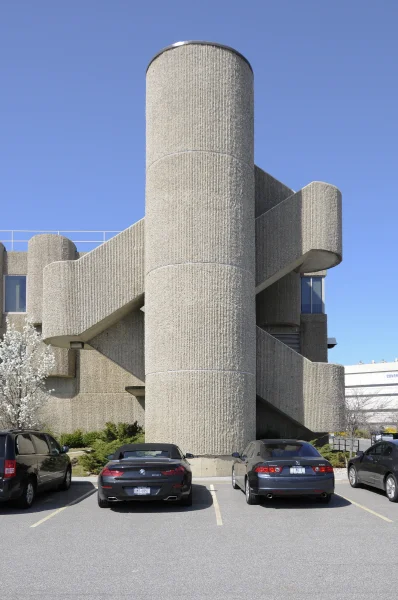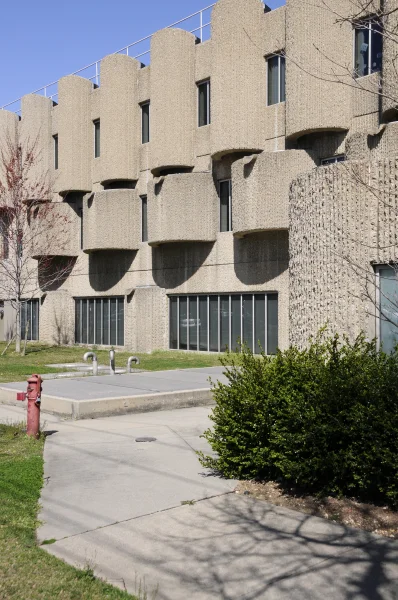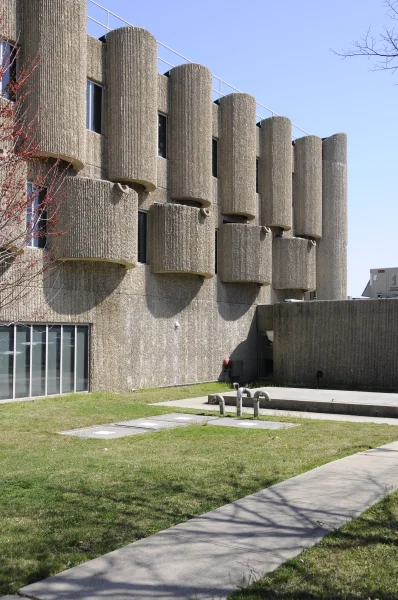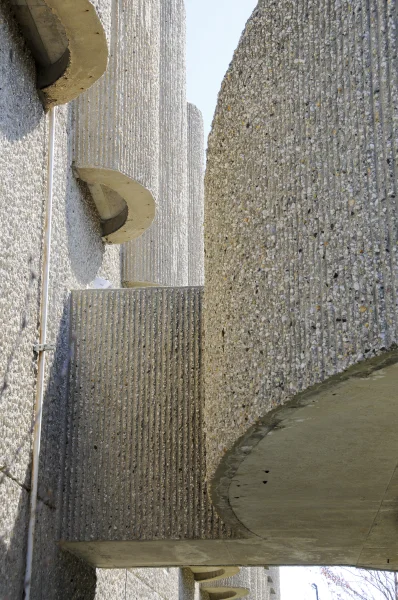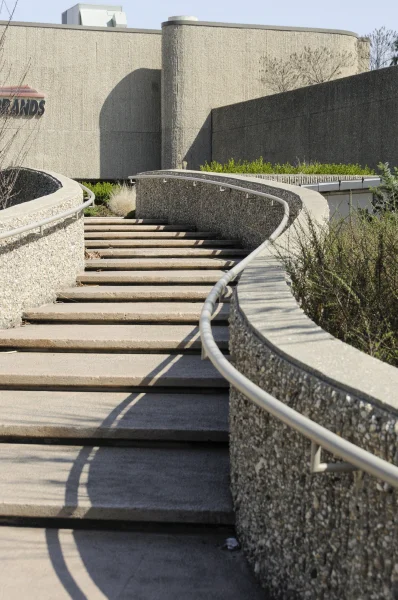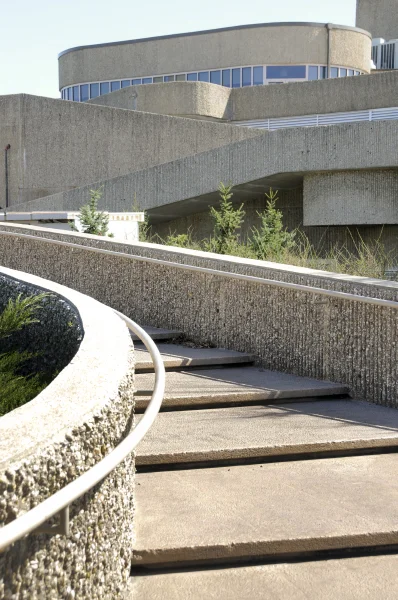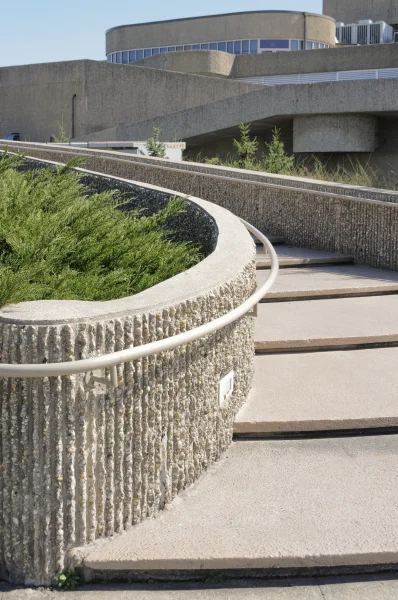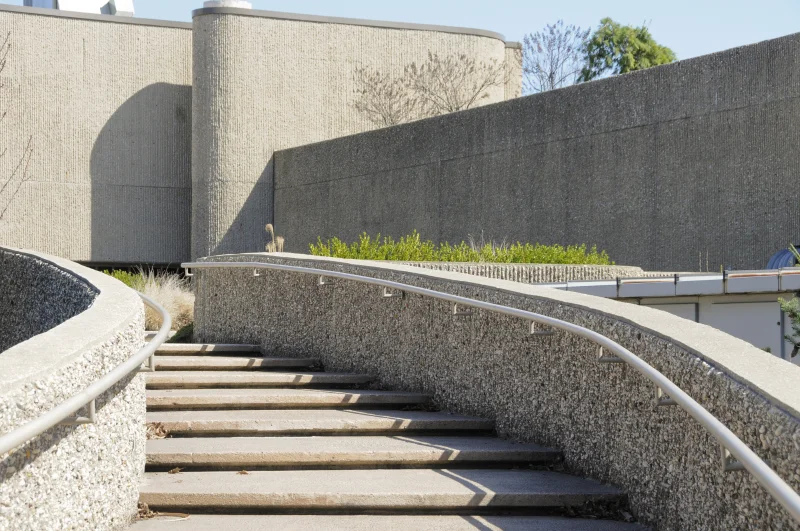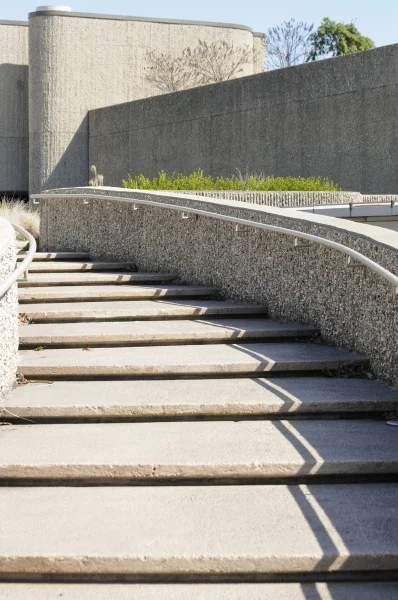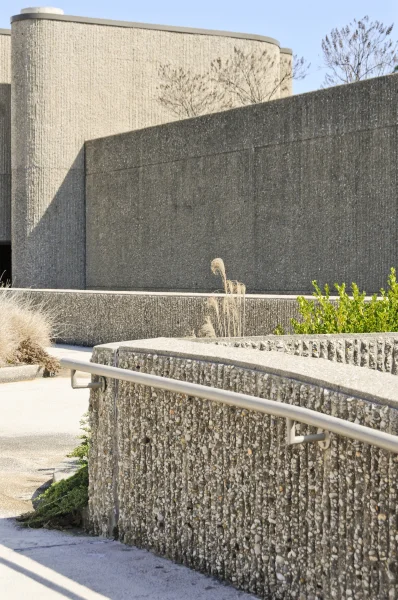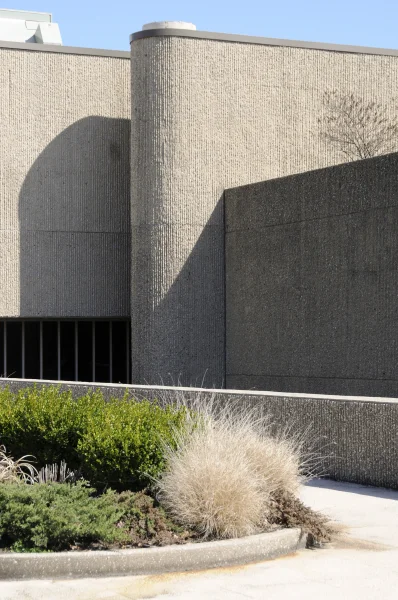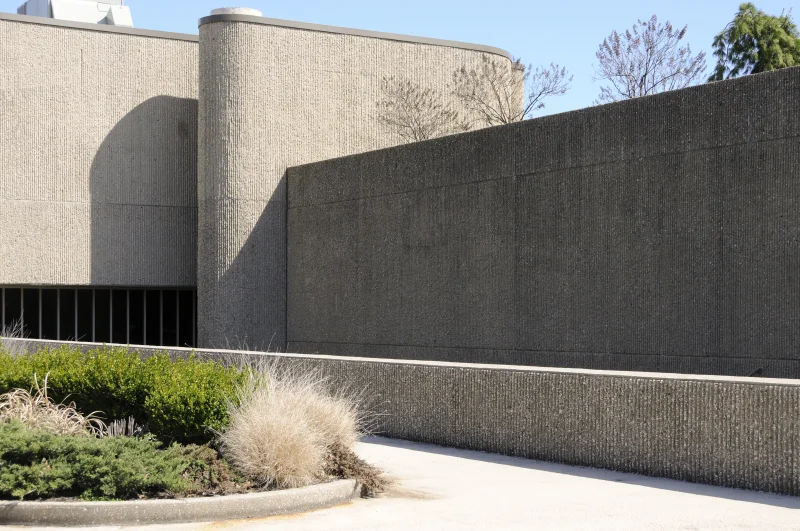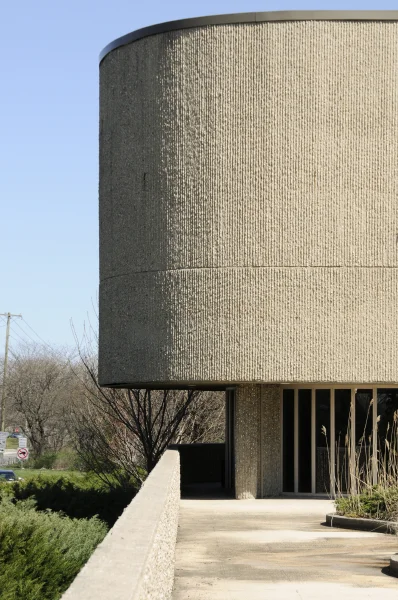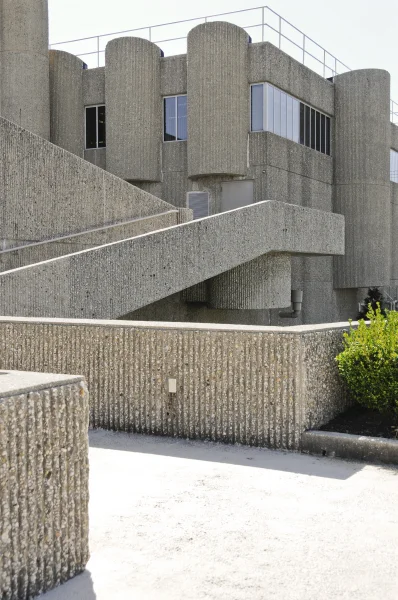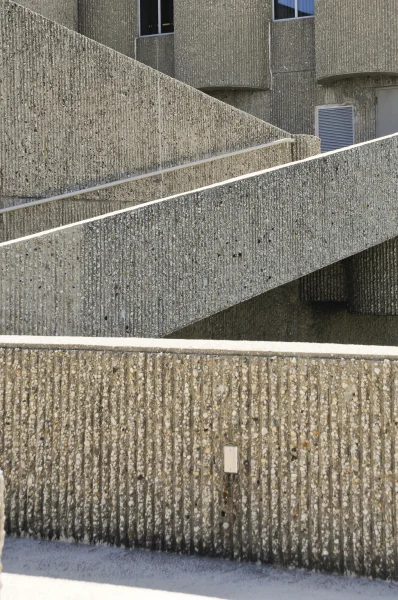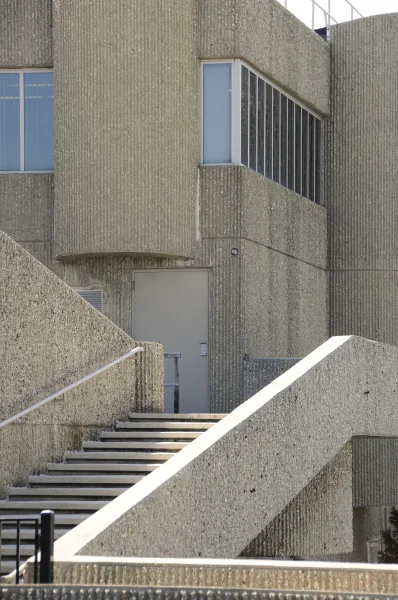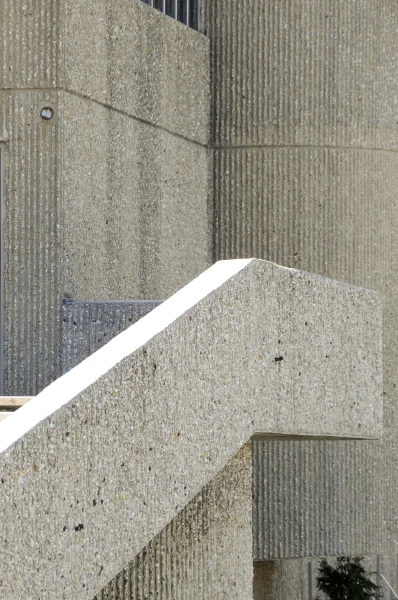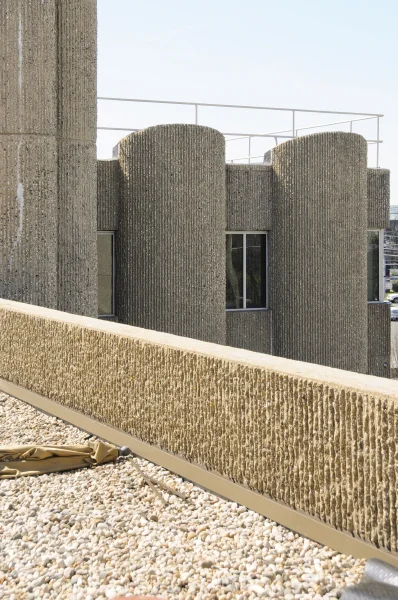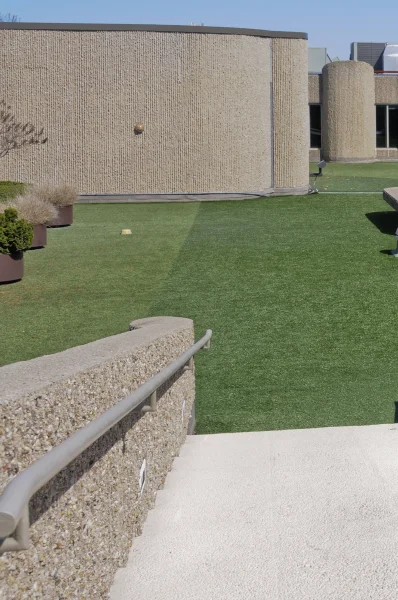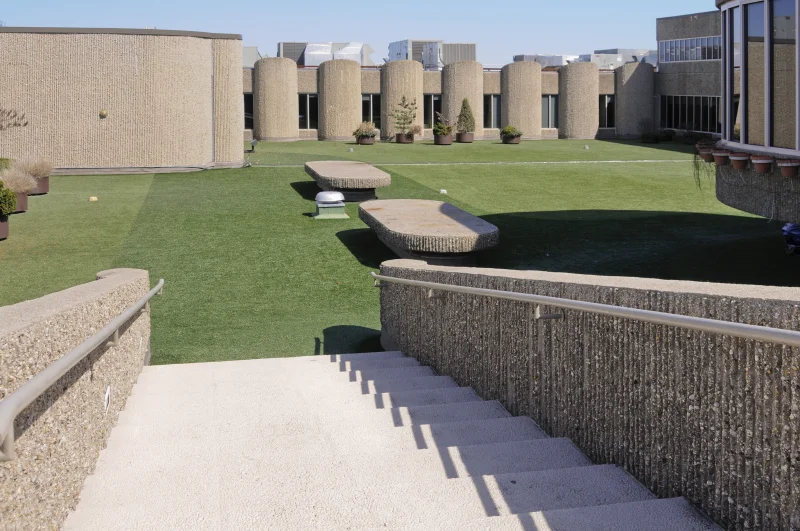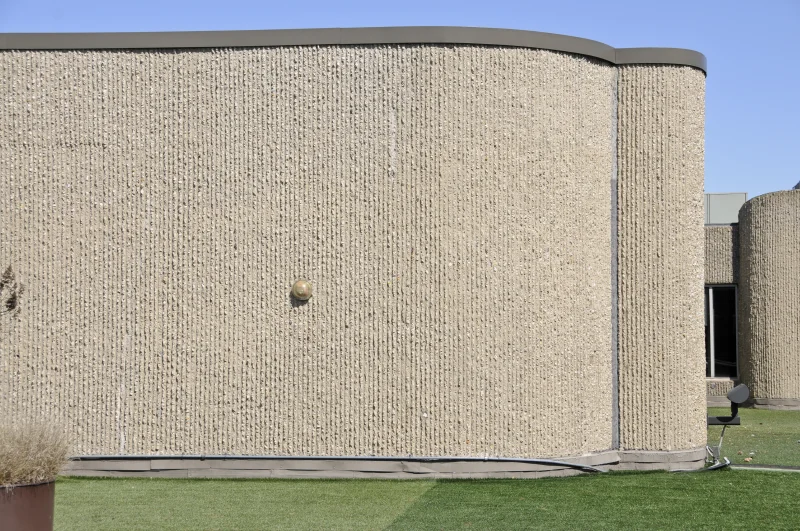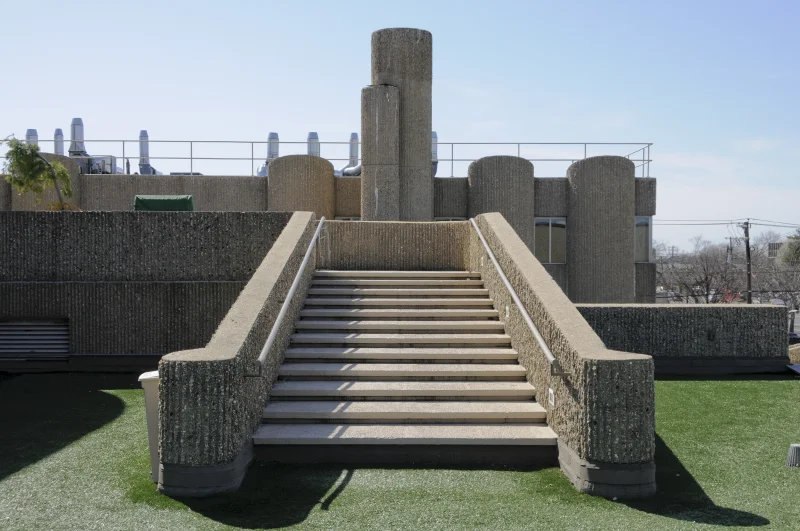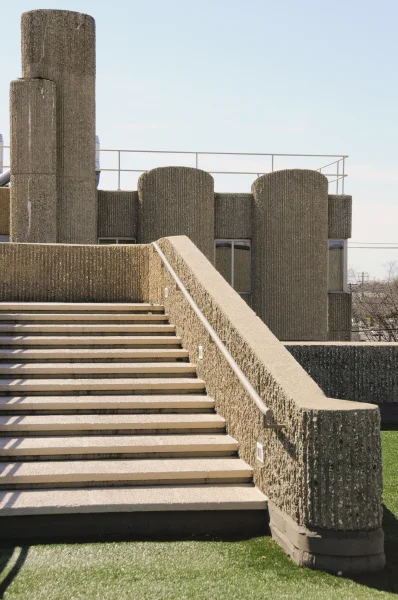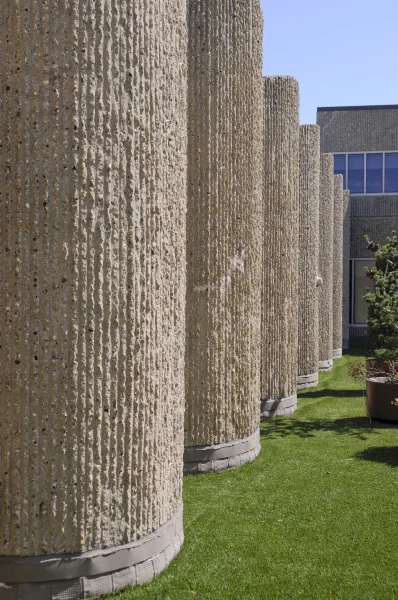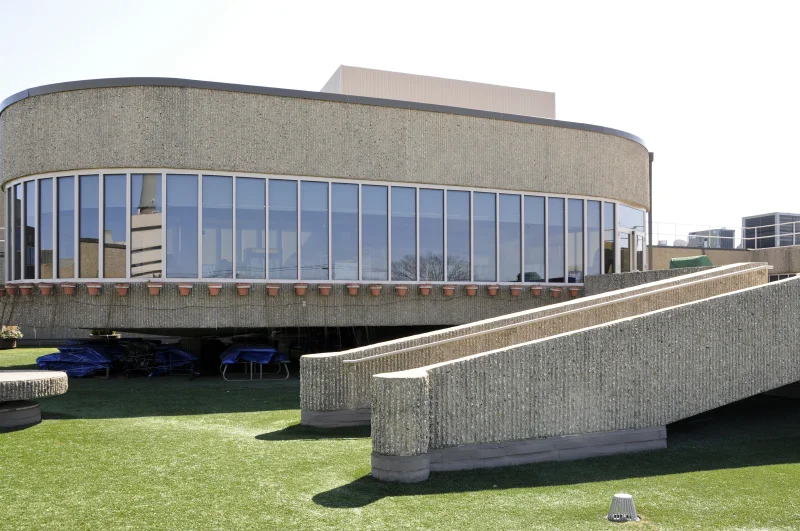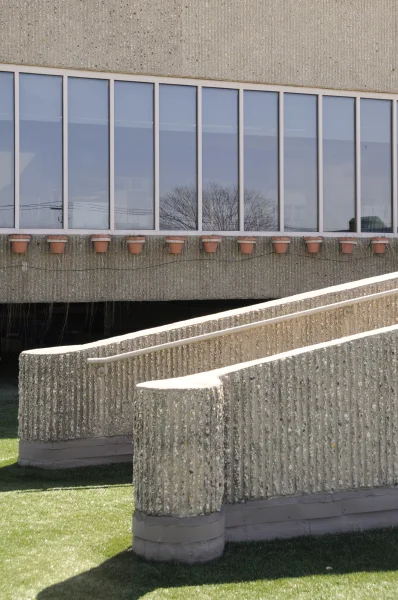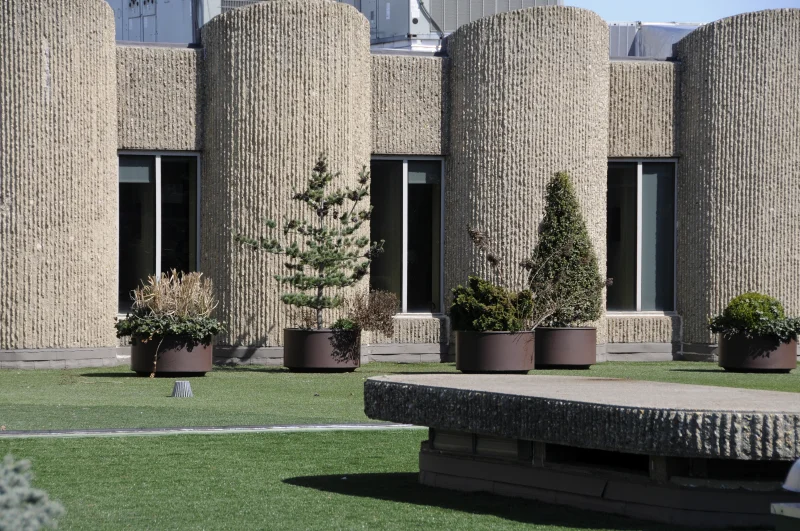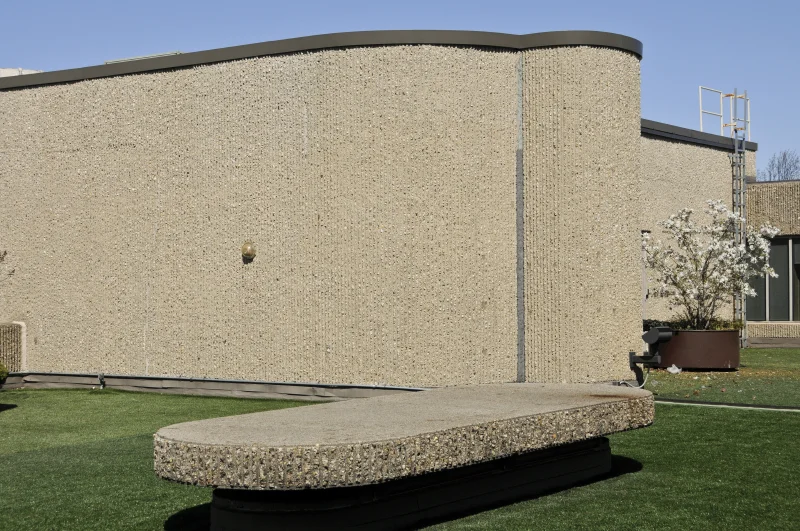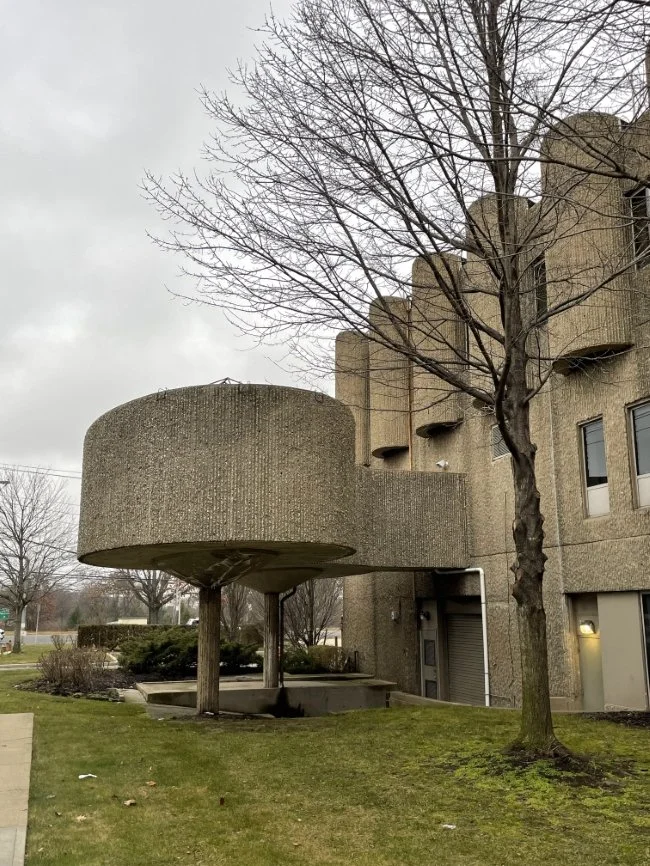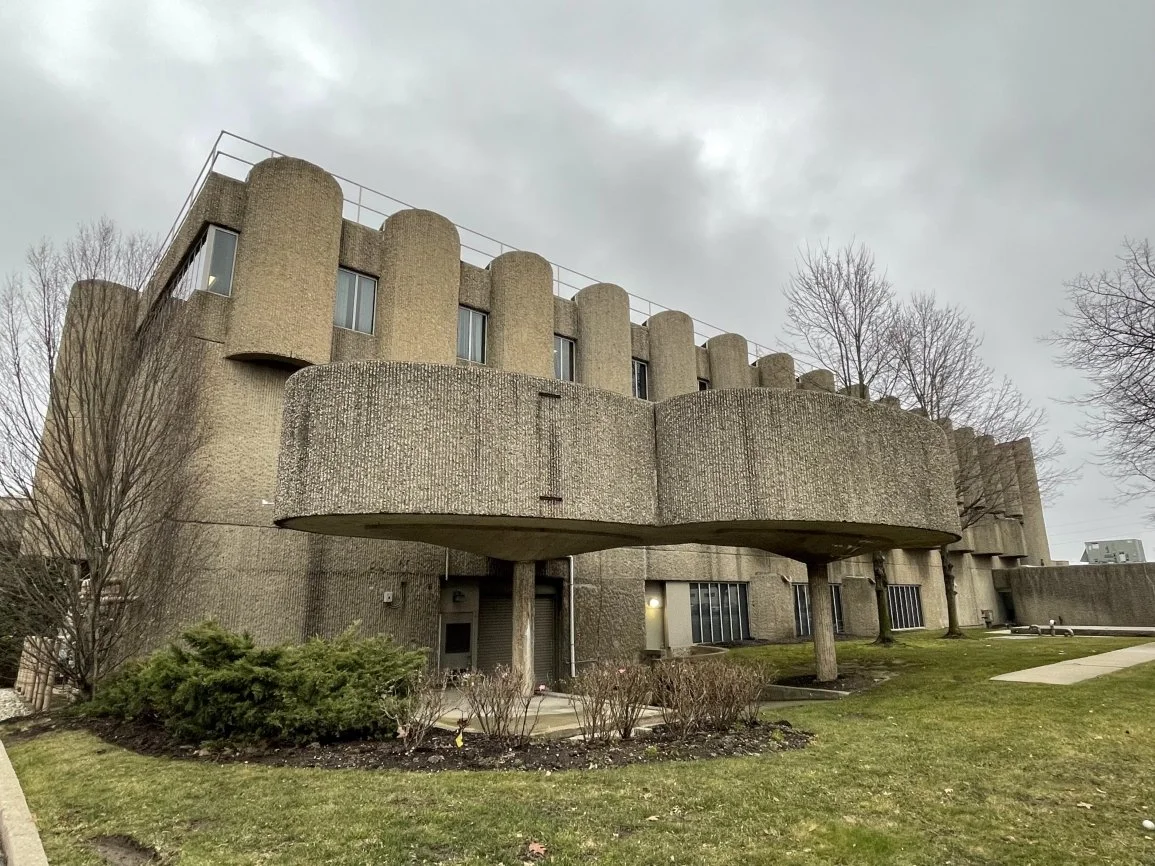Welcome to the Archives of The Paul Rudolph Institute for Modern Architecture. The purpose of this online collection is to function as a tool for scholars, students, architects, preservationists, journalists and other interested parties. The archive consists of photographs, slides, articles and publications from Rudolph’s lifetime; physical drawings and models; personal photos and memorabilia; and contemporary photographs and articles.
Some of the materials are in the public domain, some are offered under Creative Commons, and some are owned by others, including the Paul Rudolph Estate. Please speak with a representative of The Paul Rudolph Institute for Modern Architecture before using any drawings or photos in the Archives. In all cases, the researcher shall determine how to appropriately publish or otherwise distribute the materials found in this collection, while maintaining appropriate protection of the applicable intellectual property rights.
In his will, Paul Rudolph gave his Architectural Archives (including drawings, plans, renderings, blueprints, models and other materials prepared in connection with his professional practice of architecture) to the Library of Congress Trust Fund following his death in 1997. A Stipulation of Settlement, signed on June 6, 2001 between the Paul Rudolph Estate and the Library of Congress Trust Fund, resulted in the transfer of those items to the Library of Congress among the Architectural Archives, that the Library of Congress determined suitable for its collections. The intellectual property rights of items transferred to the Library of Congress are in the public domain. The usage of the Paul M. Rudolph Archive at the Library of Congress and any intellectual property rights are governed by the Library of Congress Rights and Permissions.
However, the Library of Congress has not received the entirety of the Paul Rudolph architectural works, and therefore ownership and intellectual property rights of any materials that were not selected by the Library of Congress may not be in the public domain and may belong to the Paul Rudolph Estate.
LOCATION
Address: 1000 Stewart Avenue
City: Garden City
State: New York
Zip Code: 11530
Nation: United States
STATUS
Type: Industrial
Status: Built
TECHNICAL DATA
Date(s): 1960-1964
Site Area: 8 acres
Floor Area: 160,000 s.f. (30,000 s.f. devoted to research)
Height:
Floors (Above Ground):
Building Cost:
PROFESSIONAL TEAM
Client: Endo Laboratories, Inc.
Architect: Paul Rudolph
Rudolph Staff: Bryant L. Conant, Job Captain
Associate Architect:
Landscape: Robert Zion and Harold Breen, New York
Structural: Henry A. Pfisterer
MEP: Walter Kidde Constructors Incorporated, New York
QS/PM:
SUPPLIERS
Contractor: Walter Kidde Constructors Inc.; Schumacher & Forelle, Inc.
Subcontractor(s): Central Cement Finishing Company, Inc. (concrete)
Pharmaceutical Laboratory / Office / Manufacturing Building for ENDO Laboratories
Endo Pharmaceuticals begins as a company founded in New York City known as “Intravenous Products Company of America Inc.” Originally the firms makes only injectables - mainly, medicines that could be injected into the body. As the company expands its product line and begins to concentrate on research, it adopts as its trademark a Greek word “endo” - meaning “within” - which it had applied to one of its product lines. Endo becomes known for a totally integrated operation - research, development, manufacturing and marketing all under one roof.
The program is to build a home office for a producer of prescription pharmaceuticals for its international operations, research laboratories and production facilities.
The level property is to the south of a major thoroughfare (Stewart Avenue). The building is sited to permit future expansion to the south as needed.
The first floor and mezzanine house all production, warehousing, shipping and receiving functions and those laboratories related to production. A solid walled rectangular structure encloses these floors and serves as a podium for the contrasting forms of the second floor. The curvilinear “village” at that level comprises an office block on the east, a laboratory block on the west, and a cluster of employee facilities opening onto a landscaped terrace at the center. The circular forms of stair and elevator towers and mechanical stacks rising from the lower floors contribute to the composition.
Visitors approach the building by one of two curved ramps that rise to a platform covering the executive parking area; from there they will be able to enter the two-story lobby or follow another ramp up to the large central terrace.
Hanging suspended from the ceiling above a curved staircase in the entrance lobby is an abstract sculpture made of plastic and titled, ‘Woman’
The facades of the administrative and research blocks are composed of repeating curved walls separated by casement windows and illuminated on the interior by skylights.
The entire building is composed of exposed-aggregate concrete, cast in place. The walls are finished with the same bush-hammered finish that Rudolph created for the Yale Art & Architecture Building and used elsewhere such as the Christian Science Student Center at the University of Illinois.
Ceilings of the administrative block are acoustical plaster vaults suspended from the structural slab. This allows for air-conditioning ducts while permitting the ceilings to rise to the underside of the structural slab.
On April 3, 1964 Endo Pharmaceuticals President Joseph Ushkow (1902-1985) tells a reporter at the New York Times that he plans to “holler like hell” because the Long Island State Park Commission is planting trees along the Meadowbrook Parkway to hide the new multimillion-dollar plant from motorists. The commission had already planted nine 20-25 feet tall evergreens across the street from the plant and planned to plant 64 more. He says the commission is “throwing out its money” because he is spending $100,000 to landscape the plant before it opens in September. “I am surprised, I am shocked! They ought to put those trees where they can make better use of them.” Mr. Ushkow says that architects are “coming from all over the world” to view his plant because of its design. He also notes he had a problem with the commission, including a demand that he not display a sign that would be visible to motorists on the Meadowbrook. “We reduced the sign from the original size because we were trying to do the right thing,” he says. “But if they plant trees and you can’t see our name, how will anybody on the parkway know who we are?” When asked, a workman said he was “ordered to plant the trees in front of the building” because everybody seems to think it’s an eyesore. However, Executive Secretary of the commission, Chester R. Blakelock said it was not true and that they were simply putting screen planting where there isn’t any. The New York Times calls Rudolph at his office in Boston for an interview. Rudolph says, “anything that is good is bound to arouse controversy.” When asked if he thought the trees detract from the building, he admits “I am somewhat taken aback.”
In 1964 the building is the recipient of the 1964 Award from the Concrete Industry Board, Inc. of New York as “Concrete Building of the Year” for “representing the best in conception, originality, and applicability of concrete in both design and construction.”
In 1969 the company is bought by Du Pont, allowing Du Pont a window into pharmaceuticals marketing and providing Endo with a broader financial base and improved pharmaceutical research capability.
In 1969, the company’s President and Chief Executive Officer Maurice Allen Deane (1926-2020) and his wife Barbara E. Deane (1930-) - the daughter of former President Joseph Ushkow - hire Paul Rudolph to design the Deane Residence in nearby King’s Point, New York.
The project is featured in ‘Long Island Modernism: 1930-1980” by Caroline Rob Zaleski published on September 10, 2012.
“Anything good is bound to arouse controversy.”
“The first floor of this block is a huge industrial areas enclosed almost entirely with a concrete wall. On the roof is placed a village-like grouping of buildings, consisting of offices, laboratories, stairs and elevators and other communal facilities, each clearly articulated. Thus dissimilar elements are differentiated rather than streamlining all functions into package. Natural light is drawn into the building via opaque bays sky-lighted above.”
DRAWINGS - Design Drawings / Renderings
DRAWINGS - Construction Drawings
DRAWINGS - Shop Drawings
PHOTOS - Project Model
PHOTOS - During Construction
PHOTOS - Completed Project
PHOTOS - Current Conditions
LINKS FOR MORE INFORMATION
Endo Laboratories on the DocomomoUS website
RELATED DOWNLOADS
PROJECT BIBLIOGRAPHY
“Building in the News.” Architectural Forum, no. 119, Sept. 1963, p. 16.
“Chateau Endo, Pharmaceutical Laboratories at Garden City.” Architectural Review, no. 137, Feb. 1965, p. 96.
“Chronological List of Works by Paul Rudolph, 1946-1974.” Architecture and Urbanism, no. 49, Jan. 1975.
Corrado Gavinelli. Architettura Contemporanea: Dal 1943 Agli Anni ’90. Jaca Book, 1995.
Dixon, John. “Fortress for Pharmaceuticals.” Progressive Architecture, no. 45, Nov. 1964, pp. 168–75.
“Endo Laboratories.” Architecture Francaise, no. 297–298, 1967, pp. 88–89.
“Fulfilling a Mandate in the Arts.” Kingston Daily Freeman, April 20, 1968. p. 45.
“I Labortori Endo a Garden City New York: Il Materiale Come Componente Essenziale Nella Architettura Di Paul Rudolph.” L’Industria Italiama Del Cemento, no. 37, Feb. 1967, pp. 73–88.
“In Pursuit of Diversity.” Time, no. 86, July 1965, pp. 56–58.
John Dixon. Architectural Design Preview, U.S.A. Reinhold, 1962.
“Laboratori Farmaceuti Endo a Garden City New York.” Architettura, no. 10, Apr. 1965, pp. 816–17.
Paul Rudolph. Paul Rudolph: Dessins D’Architecture. Office du Livre, 1974.
Paul Rudolph and Sybil Moholy-Nagy. The Architecture of Paul Rudolph. Praeger, 1970.
“Pharmazeutische Fabrik (Endo Laboratories) Garden City, New York.” Deutsche Bauzeitung, no. 5, May 1966, pp. 355–59.
Robert A. M. Stern. New Directions in American Architecture. Braziller, 1969.
---. New Directions In American Architecture. Braziller, 1977.
Ronald Maiorana. “L.I. Plant Scores Parkway Screen.” New York Times, 4 Apr. 1964, p. 29.
Rupert Spade. Paul Rudolph. Simon and Schuster, 1971.
“Sculptured Factory in Suburbia Endo Laboratories Headquarters in Garden City, New York.” Interiors, no. 124, Apr. 1965, pp. 118–22.
“Structure and Design: A Pharmaceutical Castle for the Long Island Plain.” Fortune, no. 70, Nov. 1964, pp. 205–06.
Tony Monk. The Art and Architecture of Paul Rudolph. John Wiley & Sons Ltd., 1999.
Wayne Andrews. Architecture in New York: A Photographic History. 1969.
Werner Hofmann. Modern Architecture in Color. Viking, 1970.
“Work of Paul Rudolph.” Building, no. 210, Mar. 1966, pp. 87–89.
“You’re Wrong: It’s a Factory.” Van Wert Times Bulletin, January 20, 1965. p. 6






















